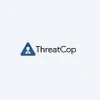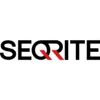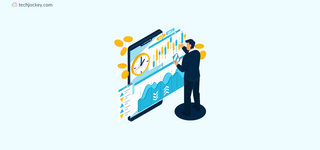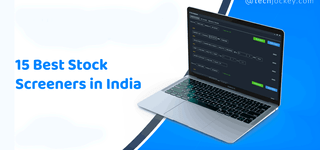How to Choose the Right Cybersecurity Solution for Dark Web Monitoring

The growing concerns about cyber threats from dark web networks are pushing enterprises to choose the right cybersecurity solutions. With cybercriminals increasingly using AI and advanced techniques to evade detection, implementing dark web monitoring strategies is more important than ever.
Modern enterprises face an overwhelming array of cybersecurity solutions claiming to provide comprehensive dark web monitoring capabilities. However, not all platforms deliver equal value, and selecting the wrong solution can result in:
- Ineffective threat detection
- Wasted resources
- Continued exposure to cyberattacks
Selecting the best measure can mean the difference between proactive threat prevention and reactive damage control.
This blog provides a strategic framework for selecting dark web monitoring solutions that align with your organizational risk profiles, technical requirements, and budgetary constraints.
Why Choosing the Right Monitoring Solution Matters?
Before understanding how to choose the right dark web monitoring solution. Let’s just simplify how selecting the right or wrong cybersecurity solution can impact your organization. With their strengths and weaknesses, security leaders would be able to make informed decisions that deliver measurable improvements in organizational cybersecurity posture.
The selection of appropriate dark web monitoring solutions directly impacts organizational resilience against cyber threats that traditional security measures cannot detect or prevent. Below is the breakdown of how this choice impacts your organization:
1. Threat Detection and Visibility
- Right Choice: Enhances visibility into threats that traditional tools miss.
- Wrong Choice: Leaves blind spots, allowing undetected reconnaissance and attacks.
2. Prevention vs. Reaction
- Right Choice: Enables early warnings and proactive defense.
- Wrong Choice: Leads to reactive responses, often after damage is done.
3. Operational Efficiency
- Right Choice: Filters alerts using AI/ML, prioritizing real threats.
- Wrong Choice: Overloads teams with false positives or irrelevant data.
4. Integration with Security Stac
- Right Choice: Seamlessly integrates with SIEM, SOAR, and threat intel platforms.
- Wrong Choice: Operates in silos, reducing intelligence value and slowing response.
5. Cost and Resource Optimization
- Right Choice: Reduces long-term costs through smarter prevention.
- Wrong Choice: Increases costs due to breaches, downtime, and inefficient tooling.
6. Strategic Security Growth
- Right Choice: Lays the foundation for threat hunting and predictive analysis.
- Wrong Choice: Limits future capabilities and scalability of security programs.
7. Competitive Advantage
- Right Choice: Strengthens brand trust and long-term resilience.
- Wrong Choice: Exposes the organization to reputational and financial risks.
The decision process for selecting cybersecurity solutions requires careful consideration of multiple factors. Organizations must balance immediate security needs with future growth requirements.
Leaders must ensure that selected solutions enhance rather than complicate existing security operations workflows.
Key Factors to Consider Before Choosing a Dark Web Monitoring Solution
Selecting the right dark web monitoring solution requires a strategic balance of technology, risk awareness, regulatory compliance, and organizational needs. Below are the essential factors grouped into logical categories to guide your decision-making process.
1. Organizational Risk Assessment and Threat Modeling
Before evaluating tools, understand your threat landscape to ensure the solution aligns with your actual risks.
- Conduct a comprehensive risk assessment.
- Identify critical assets, potential threat vectors, and existing security gaps.
- Map out high-value targets (e.g., employee credentials, IP, customer data).
- Consider industry-specific threats such as Finance (credential trading, fraud schemes, account takeovers), Healthcare (patient data sales, ransomware, medical ID theft), or Retail (credit card dumps, refund fraud, supply chain vulnerabilities).
- Align with organizational size and complexity. Large enterprises need scalable, integratable, analytics-heavy platforms, whereas smaller organizations may prefer simplified, targeted monitoring tools.
2. Budget Allocation and Cost-Benefit Analysis
Not all solutions are equal in price or value. Evaluate financial implications with long-term vision.
- Establish a realistic budget.
- Consider both upfront and ongoing costs: licensing, implementation, training, and support.
- Evaluate total cost of ownership (TCO).
- Account for hidden expenses such as customization, integrations, or infrastructure upgrades.
- Measure ROI beyond direct savings.
- Include indirect benefits like improved compliance, reduced breach impact, customer trust, and insurance discounts.
- Understand pricing models. Some vendors charge per asset monitored or alert volume. Others offer flat-rate pricing or subscription-based models, and match this with expected usage.
3. Technical Infrastructure and Integration Requirements
Ensure the solution fits seamlessly into your existing security ecosystem and tech stack.
- Evaluate integration capabilities.
- Prioritize tools that integrate with SIEM, SOAR, threat intelligence platforms, and ticketing systems.
- Look for API support for custom workflows.
- Match deployment models to infrastructure needs. Options include on-premises, cloud-native, or hybrid deployments.
- Consider your organization’s data storage policies and operational preferences.
- Assess internal expertise and training needs. Advanced tools require skilled analysts and regular tuning. Simpler interfaces are better for lean teams with limited cyber expertise.
4. Relevance, Intelligence Quality, and Alerting
The quality and context of alerts matter as much as speed.
- Demand actionable and contextual intelligence. Look for detailed alerts with threat actor profiles, attack timelines, and mitigation steps.
- Avoid tools that generate alert fatigue with excessive false positives.
- Leverage AI and automation. Choose solutions that prioritize threats using machine learning. Automation can help reduce manual analysis time and streamline triage.
- Ensure real-time or near-real-time alerting. Early warnings enable preemptive action before damage occurs.
5. Regulatory and Compliance Considerations
Compliance is not optional. Your tool must meet relevant legal and regulatory standards.
- Adhere to industry-specific compliance standards. E.g., HIPAA (healthcare), PCI-DSS (finance), NIST or ISO frameworks.
- Manage jurisdictional and data sovereignty challenges. Multinational organizations must account for varying laws on data collection, storage, and transfers.
- Align with data privacy laws. Ensure GDPR, CCPA, and similar frameworks are respected. Understand if the solution requires consent for monitoring certain types of data.
This structured approach ensures your organization chooses a dark web monitoring tool that’s not only technically sound but also strategically aligned with your risk profile, regulatory landscape, and business goals.
Must-Have Features in a Dark Web Monitoring Solution
When selecting a cybersecurity tool, it’s critical to ensure it includes the following essential features to maximize threat visibility, response effectiveness, and operational efficiency.
1. Advanced Artificial Intelligence and Machine Learning Capabilities
- Leverages AI to process and analyze massive volumes of unstructured dark web data.
- Uses Natural Language Processing (NLP) to interpret slang, coded language, and sentiment in cybercriminal conversations.
- Employs adaptive machine learning to detect emerging threats and reduce false positives.
- Provides predictive analytics to anticipate future threats and attack campaigns.
- Continuously learns from evolving tactics, techniques, and procedures (TTPs) of threat actors.
2. Comprehensive Data Source Coverage and Collection Capabilities
- Accesses a wide range of dark web sources: forums, marketplaces, chatrooms, paste sites, and private channels.
- Utilizes stealthy, automated crawlers that evade anti-bot mechanisms used by cybercriminals.
- Supports multi-language monitoring to cover global cybercrime activities.
- Understands regional and cultural nuances in threat communications.
- Maintains persistent and adaptive data collection in shifting dark web environments.
3. Real-Time Alerting and Threat Prioritization Systems
- Sends immediate alerts for urgent threats such as credential leaks or targeted attacks.
- Uses AI-based risk scoring to prioritize alerts by severity, credibility, and business impact.
- Offers customizable alerting channels: email, SMS, SIEM alerts, or API push notifications.
- Prevents analyst overload by filtering and categorizing threat data intelligently.
- Allows alert thresholds and rules to be tailored to organizational workflows.
4. Seamless Integration and API Capabilities
- Provides robust APIs for integration with SIEM, SOAR, threat intelligence platforms, and incident response tools.
- Includes pre-built connectors for platforms like Splunk, IBM QRadar, ArcSight, and Palo Alto Cortex XSOAR.
- Enables flexible data export in standard formats (JSON, CSV, STIX, etc.) for custom analytics.
- Facilitates automated playbooks and workflow orchestration across security operations.
- Ensures bi-directional data sharing with other systems for real-time enrichment and response.
5. User-Friendly Dashboards and Reporting Capabilities
- Features intuitive dashboards with role-based views for analysts, managers, and executives.
- Offers customizable interface elements for focused threat tracking and investigation.
- Support detailed analyst-level threat reports and executive summaries.
- Provides historical trends and analytics for long-term security planning and performance measurement.
- Enables exportable reports for compliance, board reporting, and security audits.
Mistakes to Avoid While Choosing the Right Cybersecurity Solution for Dark Web Monitoring
Choosing the right tool is critical for protecting your organization’s digital assets, and making the wrong choice can leave you exposed to serious threats. Here are key mistakes to avoid during this process:
| Mistake | Why It’s a Problem | Tip to Avoid It |
|---|---|---|
| Ignoring Your Organization’s Specific Needs | The tool may not align with your actual risk profile or infrastructure. | Conduct a risk assessment; understand your architecture and compliance needs. |
| Focusing Only on Detection, Not Response | Delays in mitigation can lead to severe damage. | Choose tools with automated response, containment, and forensics. |
| Overlooking Integration and Compatibility | Poor integration causes blind spots and inefficiencies. | Verify compatibility with your current systems and tools (e.g., SIEM, EDR). |
| Underestimating Ease of Use and Management | A complex tool can overwhelm your team. | Prioritize user-friendly interfaces, training support, and vendor resources. |
| Failing to Account for Scalability | The tool may become inadequate as your business grows. | Opt for tools that scale with your infrastructure and user base. |
| Not Checking for Compliance Support | Non-compliance may lead to legal penalties. | Ensure tools support relevant regulations like GDPR, HIPAA, PCI-DSS, etc. |
| Neglecting Vendor Reputation and Support | Poor support can leave you vulnerable during incidents. | Research vendor reputation, reviews, SLAs, and product roadmap. |
| Relying on a Single Layer of Defense | No single tool can protect against all threats. | Implement a layered (defense-in-depth) cybersecurity strategy. |
| Not Testing the Tool Before Full Deployment | Issues may only appear after costly rollout | Always run pilot tests or proofs of concept in your environment. |
| Ignoring Total Cost of Ownership (TCO) | Hidden costs can make a cheap tool more expensive long-term. | Analyze licensing, implementation, training, and maintenance costs. |
Conclusion
Selecting the right dark web monitoring solution represents a critical strategic decision that significantly impacts organizational cybersecurity resilience and threat response capabilities. The evaluation process requires a comprehensive assessment of organizational requirements, thorough solution testing, and careful consideration of long-term strategic implications.
For organizations beginning their evaluation process, understanding the fundamental principles and what is dark web monitoring provides essential background knowledge. Additionally, reviewing top dark web monitoring tools analysis offers insights into specific platform capabilities and market positioning that can inform selection decisions.
Jasmeet is a bilingual content writer with proven expertise in creating B2B content across digital and print platforms to support Sales & Marketing. She is a dynamic content specialist with 4+ years of experience collaborating with industry giants like X, Unilever, Yell UK, Tej Bandhu Group, and Veoci... Read more




























